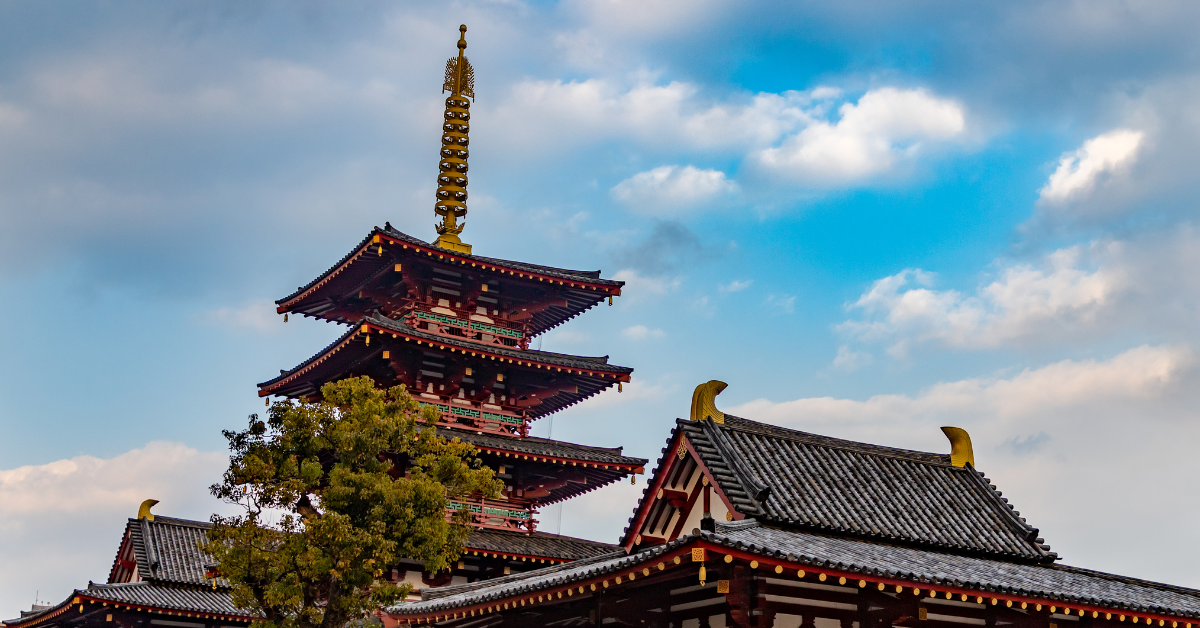The Horyu-ji area in Nara is home to the world’s oldest surviving wooden buildings and has been a UNESCO World Heritage Site since 1993. Closely tied to Prince Shotoku, it preserves the essence of Japanese Buddhist culture from the Asuka period. Visitors can explore its timeless architecture, sacred treasures, and the serene atmosphere that has endured for over 1,300 years.
Historical Background of the Horyu-ji Area
Horyu-ji was founded in 607 by Empress Suiko and Prince Shotoku. At that time, Buddhism had only recently been introduced to Japan, and this temple became a symbol of the new religious culture. The original complex was destroyed by fire in 670, but was soon rebuilt and, through repeated repairs and preservation efforts, has survived to the present day.
The Western Precinct (Saiin Garan) retains the architectural style of the 7th century and is recognized as the world’s oldest wooden building complex. Its symmetrical layout places the Five-Story Pagoda and the Main Hall (Kondo) side by side, surrounded by a covered corridor, combining Buddhist aesthetics with structural rationality.
Horyu-ji is not only a religious site but also a treasure trove of Japanese architecture and craftsmanship. Its surviving buildings and statues testify to the advanced skills and refined aesthetics of the time, making it indispensable to understanding Japan’s cultural history.
Reasons for World Heritage Inscription
The Horyu-ji area was registered as a World Heritage Site for its historical significance, architectural excellence, and cultural importance. The designated area includes the Western and Eastern Precincts, Chugu-ji Temple, and Hokki-ji Temple, presenting a comprehensive picture of ancient Japanese Buddhist culture.
Notably, it is a rare example of wooden architecture preserved for over 1,300 years, attracting attention worldwide. It also offers a complete view of the evolution of Buddhist art, religious rituals, and architectural technology.
| Category | Description |
|---|---|
| Historical Value | Global rarity of existing wooden buildings from the Asuka period |
| Architectural Value | High perfection in the layout and structure of the Western Precinct |
| Cultural Value | Fusion of faith and art since the introduction of Buddhism |
Main Highlights
Western Precinct (Saiin Garan)
The Western Precinct features the world’s oldest five-story pagoda and the Kondo at its center, with a symmetrical layout of great beauty. The pagoda, which enshrines relics of the Buddha, combines stability with elegance. Inside the Kondo, the Shaka Triad statue is revered as a masterpiece of Asuka-period sculpture.
Eastern Precinct (Toin Garan)
Built on the former residence site of Prince Shotoku, this precinct centers on the Yumedono (Hall of Dreams). The Yumedono is an octagonal hall, a rare architectural form, and symbolizes the cult of Prince Shotoku. Inside stands the Guze Kannon statue, a mysterious figure that captivates visitors.
Treasure Hall
The Horyu-ji Treasure Hall houses numerous National Treasures, including statues, sutras, and crafts. Visitors can trace the evolution of Japanese art from the Asuka to the Kamakura periods in a single visit.
Visiting Tips
When visiting Horyu-ji, it is important to plan your route in advance. To make the most of the vast grounds, the recommended route is to start at the Western Precinct, continue to the Eastern Precinct, and finish at the Treasure Hall.
Spring cherry blossoms and autumn foliage are especially beautiful, offering perfect photo opportunities. Nearby sites such as Chugu-ji Temple and the Fujinoki Kofun burial mound are also worth visiting.
| Season | Feature |
|---|---|
| Spring | Cherry blossoms in full bloom contrast beautifully with the Western Precinct |
| Summer | Lush greenery for a refreshing stroll |
| Autumn | Autumn leaves create a magical atmosphere |
| Winter | The architecture’s beauty stands out in the quiet air |
Cultural Influence of Horyu-ji
Horyu-ji has profoundly influenced Japanese Buddhist architecture and art. Technically, joinery and tile-roofing methods spread to later temple construction, while its artistic style influenced sculpture and mural painting across Japan. The faith centered on Prince Shotoku also contributed to the development of politics, education, and culture.
| Field | Influence |
|---|---|
| Architecture | Transmission and development of wooden construction techniques |
| Art | Spread of Asuka-style sculpture and murals |
| Religion | Nationwide propagation of Prince Shotoku worship |
Conclusion
The Buddhist Monuments in the Horyu-ji Area embody the fusion of Japanese history, faith, and art. The architectural ensemble, breathing the spirit of the Asuka period, is not merely a sightseeing destination but a precious site that conveys the core of Japanese culture. Visiting Horyu-ji allows one to experience the spirit and skills preserved for over 1,300 years.






